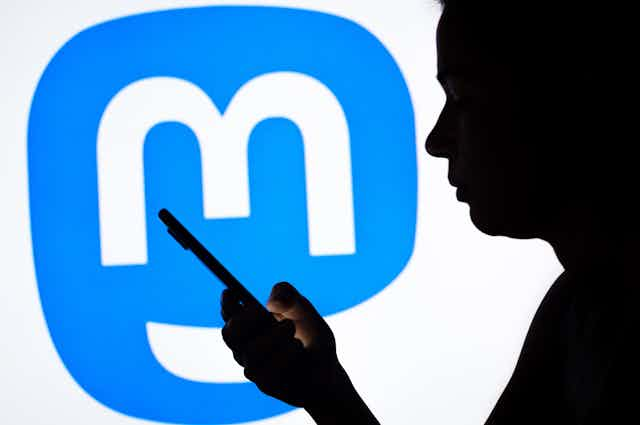In early October, the Pew Research Center released a report called “The Role of Alternative Social Media in the News and Information Environment.” While the report is well-researched and reveals a great deal about the current state of digital media, news and right-wing propaganda, it is wrong about alternative social media.
The report focuses on seven alternative social media sites: BitChute, Gab, Gettr, Parler, Rumble, Telegram and Truth Social. These sites help put the “alt” in alt-right by harbouring transphobes, anti-vaxxers and Jan. 6 insurrection sympathizers.
The report provides content analysis on these sites and shows how some Americans might rely upon them for news. For those of us concerned with the rise of bigotry, fascism and disinformation in the United States, the Pew report offers some valuable insights into the role of these particular alternative social media sites.
However, the problem with the report is that it misses a large number of alternative social media sites that actively and effectively oppose the right-wing propaganda coming from the seven sites. This distracts us from real-world solutions to the problems of online hate speech, disinformation and surveillance capitalism.
Defining alternative media
The report’s core fault is conceptual and methodological. Its definition of “alternative social media” is “social media sites with relatively small user bases that have typically emerged as alternatives to larger, more established social media sites like Facebook, Twitter and YouTube.”
Although this definition does put “alternative” in opposition to mainstream (as alternative media theory has long done), the authors’ central concern with size influences their methodology and ultimately blinds them to the diversity of alternative social media.
For example, the seven sites they selected for the study had to meet the following criteria: “they had publicly accessible posts, were mentioned in news media, and had at least 500,000 unique visitors in December 2021.”
While 500,000 unique visitors is indeed small in relation to Instagram or YouTube, this threshold excludes a significant number of alternative social media sites that do not harbour transphobes, anti-vaxxers or insurrectionists.
The fediverse
There is a network of very small online communities that band together through both technology and shared social values, known as the fediverse. These sites run software such as Mastodon, a microblogging service, or Pixelfed, an Instagram-like image sharing service.
In contrast with both corporate social media, such as Facebook and alt-right alternatives such as Truth Social, fediverse sites are often purposely small. For example, the site queer.party currently has 6,000 registered users — and it is currently closed to new members, because the administrators of that site have no desire to make it much larger.
Read more: How far-right online spaces use mainstream media to spread their ideology
However, even though they are small, there are about 9,000 fediverse sites. And they are not islands: as the name “fediverse” implies, a portmanteau of “federated” and “universe,” these sites band together, not unlike the United Federation of Planets of Star Trek fame.
Queer.party users can communicate with those on climatejustice.social, who might connect to members of the academic-focused scholar.social. Overall, the fediverse has millions of members.
Importantly, these sites can defederate with those who act unethically. For example, while Gab is a nasty, anti-Semitic place full of Nazis, it could have been worse. Much worse.
Early in its history, Andrew Torba, the founder of Gab Social, a far-right networking site, proclaimed his desire to make a large network – a federation – of white Christian nationalist sites. This would be achieved through Gab’s use of Mastodon software, which would enable such a federation.
However, Gab’s plan to make a large network of sites was thwarted by the concerted efforts of fediverse administrators and users, who used a co-ordinated campaign to isolate Gab from the rest of the fediverse. The effort worked: Gab gave up its dream of creating a decentralized network of fascists, and is now a centralized site – not much unlike the mainstream social media sites it was trying to escape.
No surveillance
The fediverse is by and large free of targeted and behavioural advertising, a key technology of surveillance capitalism. In contrast to Facebook, fediverse sites don’t monitor your activities and sell the resulting data to marketers and advertisers.
This is another contrast to the right-wing social media the Pew report focused on: Truth Social, for example, offers advertisers means to target audiences and has partnered with Rumble to expand its advertising efforts. Indeed, in this sense, Truth Social isn’t alternative at all — it’s aping the practices of Facebook.
Fediverse sites eschew surveillance capitalism, largely in favour of more mutualist ways of supporting each other.
False dichotomies
Ultimately, if we reduce “alternative social media” to be solely large, right-wing alternative media – as the Pew report does – we get a false dichotomy where the extent and diversity of the types of media available is greatly reduced.
On the one hand are the mainstream corporate social media, which, for all their faults, have in fact deplatformed people like Donald Trump. And on the other hand, we have alt-right social media, which fosters bigotry.
The result is we miss out on innovations in platform governance that both go beyond the corporate model and actually do a very good job at marginalizing hate speech and undermining surveillance capitalism.
More nuance is needed here: the Pew report focuses solely on what mass media scholar Kristoffer Holt calls “right-wing alternative media.” And in doing so, it misses a more democratic form of alternative media, what communication scholar Clemencia Rodríguez refers to as “citizens’ social media.”
And for all of us tired of both big tech and online trolling, citizens’ social media is our way forward.


